
Als de huid beschadigd raakt door het gebruik van een medisch zelfklevend product, spreken we van een MARSI (Medical adhesive-related skin injury). Hoewel MARSI grotendeels te voorkomen is, kan het bij alle leeftijdsgroepen en in alle zorgomgevingen voorkomen en wordt het onvoldoende herkend5-8.
Professionals in de gezondheidszorg noemen MARSI: "Huidbeschadiging door het gebruik van medische zelfklevende producten of hulpmiddelen zoals tapes, wondverbanden, stomaproducten, elektrodes, medicatiepleisters of wondsluitstrips6."

Volg onze gratis E-learning
Onze E-learning over MARSI bestaat uit twee modules. In de introductiemodule leer je de basisprincipes van MARSI. In de tweede module gaan we dieper in op de behandeling en preventie van MARSI en het herstel van de patiënt. Iedere module duurt ongeveer 20 minuten en wordt afgesloten met een kennistest.
Via de button hieronder kom je op ons nieuwe E-learning platform en kun je gratis een account aanmaken. Lees voor het aanmaken van een account onze handleiding.

Wat is MARSI?
MARSI (Medical adhesive-related skin injury) is een huidletsel door medische kleeflagen, en die leidt altijd tot een verlies van huidintegriteit1. Wanneer onze huid beschadigd is, wordt de beschermende functie aangetast en is ons lichaam niet langer goed beschermd.
De huidbeschadiging door medische zelfklevende producten leidt tot verschillende soorten MARSI.
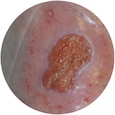
Huidstripping
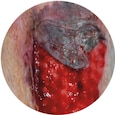
Skin tears
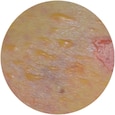
Blaarvorming
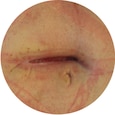
Dermatitis
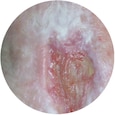
Maceratie
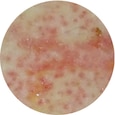
Folliculitis
Wie loopt er risico?
Iedereen met een medisch zelfklevend product op zijn lichaam loopt het risico MARSI te ontwikkelen. Het risico neemt toe bij veelvuldig gebruik door het vele aanbrengen en verwijderen6. Sommige mensen zijn echter vatbaarder voor het ontwikkelen van MARSI dan anderen.
Ouderen en pasgeborenen
Patiënten met frequente verbandwisselingen
Patiënten met ziekte gerelateerde kwetsbare huid
Patiënten met bepaalde medicatie
Meer informatie
Meer weten of een gratis sample proberen?
Geef hieronder aan of u graag de MARSI-brochure ontvangt, een gratis sample voor gebruik bij een patiënt wilt aanvragen, of beide opties wenst.
1 Stephen-Haynes J & Carville K. Skin tears made easy. Wounds International. 2011;2(4):1-6.
2 Thayer D. Skin damage associated with intravenous therapy: common problems and strategies for prevention. J Infus Nurs. 2012;35(6):390-401.
3 Lawton S. Skin 1: the structure and functions of the skin. Nurs Times. 2019;115(12):30-3.
4 LeBlanc K et al. Best practice recommendations for the prevention and management of skin tears in aged skin. Wounds International. 2018.
5 McNichol L et al. Medical adhesives and patient safety: state of the science: consensus statements for the assessment, prevention, and treatment of adhesive-related skin injuries. J Wound Ostomy Continence Nurs. 2013;40(4):365-E2
6 Fumarola S et al. Overlooked and underestimated: medical adhesive-related skin injuries. Best practice consensus document on prevention. J Wound Care. 2020;29(3):1
7 Ousey K & Wasek S. Clinician perspectives on medical adhesive-related skin injuries. Wounds UK. 2016;12(4).
8 Maene B. Hidden costs of medical tape-induced skin injuries. Wounds UK. 2013;9(1).
9 Downie F & Collier M. Medical adhesive related skin injury (MARSI): Wounds UK made easy. Wounds UK. 2021;17(1).
10 LeBlanc K et al. Best practice recommendations for prevention and management of periwound skin complications. Wounds International. 2021.
11 Dunk et al. Best practice recommendations for holistic strategies to promote and maintain skin integrity. Wounds International. 2020.
12 Yates S, McNichol L, Heinecke SB, Gray M. Embracing the concept, defining the practice, and changing the outcome: setting the standard for medical adhesive-related skin injury interventions in WOC nursing practice. J Wound Ostomy Continence Nurs. 2017;44(1):13-17.
13 Upton P et al. Complications associated with postoperative dressings: a clinician’s perspective. Wound Practice and Research. 2019; 27(4): 158-63.
14 Konya C et al. Skin injuries caused by medical adhesive tape in older people and associated factors. J Clin Nurs. 2010;19(9-10):1236-42.
15 Farris MK et al. Medical adhesive-related skin injury prevalence among adult acute care patients: a single-center observational study. J Wound Ostomy Continence Nurs. 2015;42(6):589-98.
16 Wang D et al. Medical adhesive-related skin injuries and associated risk factors in a pediatric intensive care unit. Adv Skin Wound Care. 2019;32(4):176-182.
17 Zhao H et al. Prevalence of medical adhesive-related skin injury at peripherally inserted central catheter insertion site in oncology patients. J Vasc Access. 2018;19(1):23-27.
18 Ratliff CR. Descriptive study of the frequency of medical adhesive-related skin injuries in a vascular clinic. J Vasc Nurs. 2017;35(2):86-89.
19 Alavi A, Sibbald RG, Ladizinski B, Saraiya A, Lee KC, Skotneicki-Grant S, Maibach H. Wound-related allergic/irritant contact dermatitis. Advances in skin & wound care. 2016;29(6).
20 Hitchcock J, Savine L. Medical adhesive-related skin injuries associated with vascular access. Br J Nurs. 2017;26(8):S4-S12.
21 International Wound Infection Institute (IWII). Wound Infection in Clinical Practice. Wounds International 2022.
22 Ubbink DT et al. Evidence-Based Care of Acute Wounds: A Perspective. Adv Wound Care (New Rochelle). 2015;4(5):286-294.

